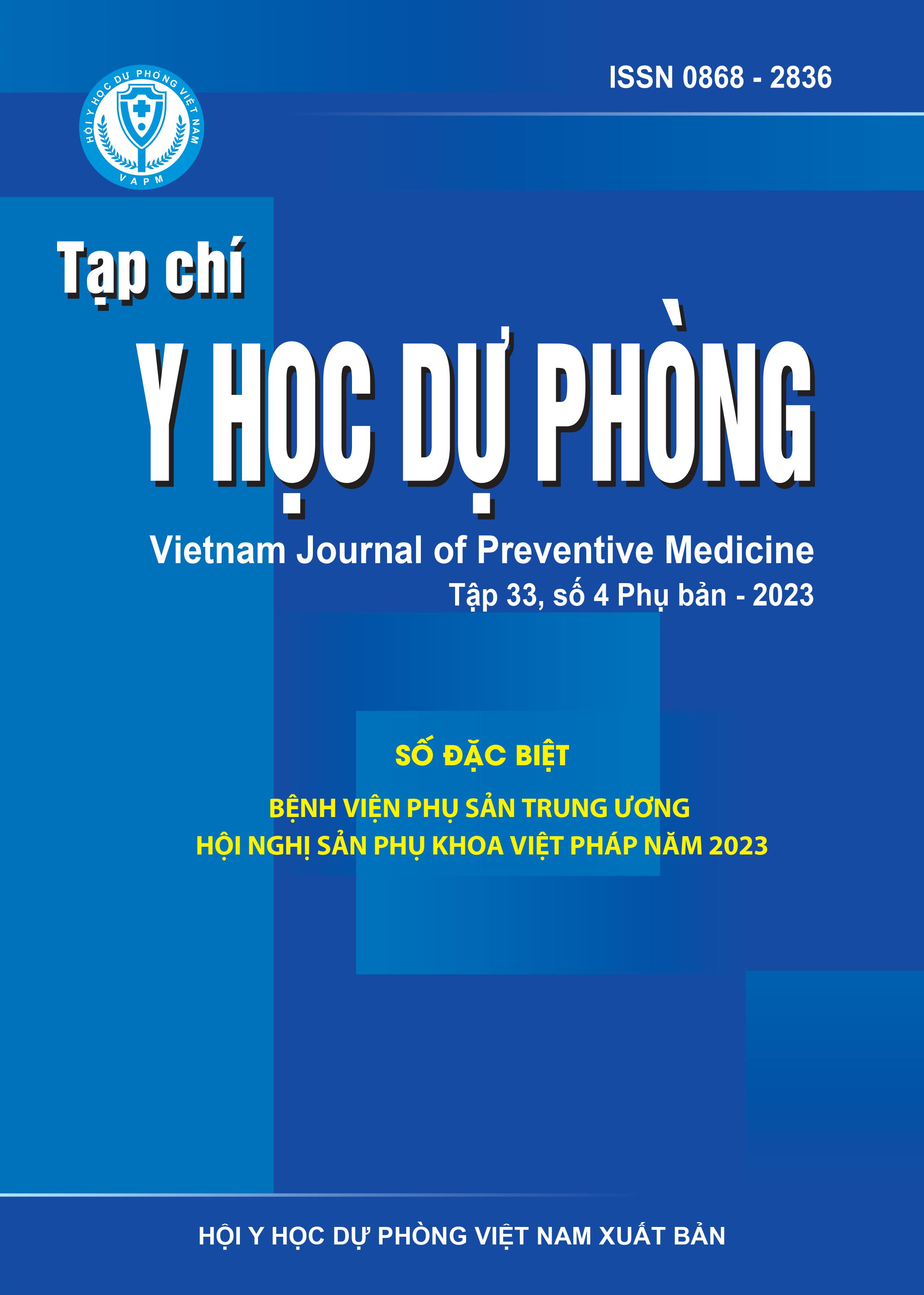Research on prenatal ultrasound findings of fetus with genetic abnormalities on aminocentesis results at the Prenatal Diagnosis Center of the National Hospital of Obstetrics and Gynecology during 2022 - 2023
DOI:
https://doi.org/10.51403/0868-2836/2023/1225Keywords:
Amniocentesis, karyotype, prenatal ultrasound findingsAbstract
The objectives of this study were to describe the ultrasound features of fetuses with abnormal amniocentesis result at the Prenatal Diagnosis Center of the National Hospital of Obstetrics and Gynecology. This was retrospective descriptive study of 201 medical record of pregnant women with abnormal amniocentesis result at the Prenatal Diagnosis Center of the National Hospital of Obstetrics and Gynecology. The research result showed that in group of trisomy 21, the percentage of increased nuchal translucency was 35.1%, increased nuchal fold thickness was 29.7%, hypoplastic/absent nasal bone was 31.1%, cardiac defects was 25.7%, no abnormal ultrasound finding was 20.3%. In the group of trisomy 18, the percentage of strawberry skull was 33.3%, choroid plexus cysts was 70.8%, hand anomalies was 83.3%, cardiac defects was 91.7%, omphalocele was 12.5%. The percentage of cleft lip +/- palate was 60%, cardiac defects was 40%, omphalocele was 40% in the group of trisomy 13. Cardiovascular anomalities in DiGeorge syndrome all belong to the group of conotruncal defects. In the group of homozygous of alpha thalassemia, the percent of increased cardiothoracic ratio was 100%, pericardial effusion was 66.6%, increased placental thickness was 46.7%. In conclusion, morphological ultrasound findings in the first trimester and in second trimester have an important role in guiding the indication of genetic tests after amniocentesis to detect genetic abnormalities of the fetus.
Downloads
Downloads
Published
How to Cite
Issue
Section
License
Publication License No 150/GP-BTTTT signed on May 8, 2014;
Electronic Publication License No 322/GP-BTTTT signed on June 15, 2016.


